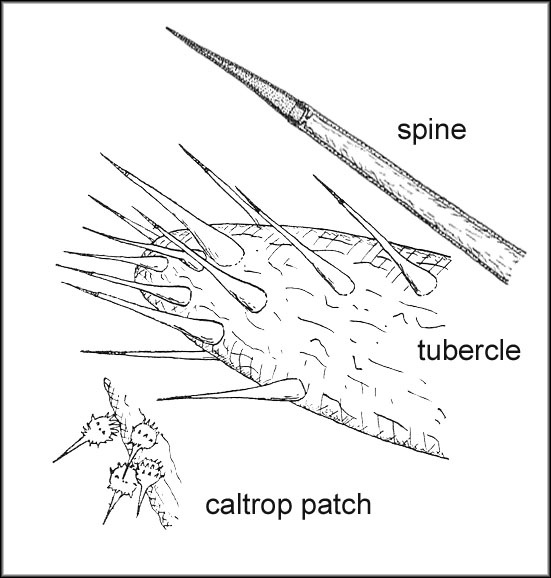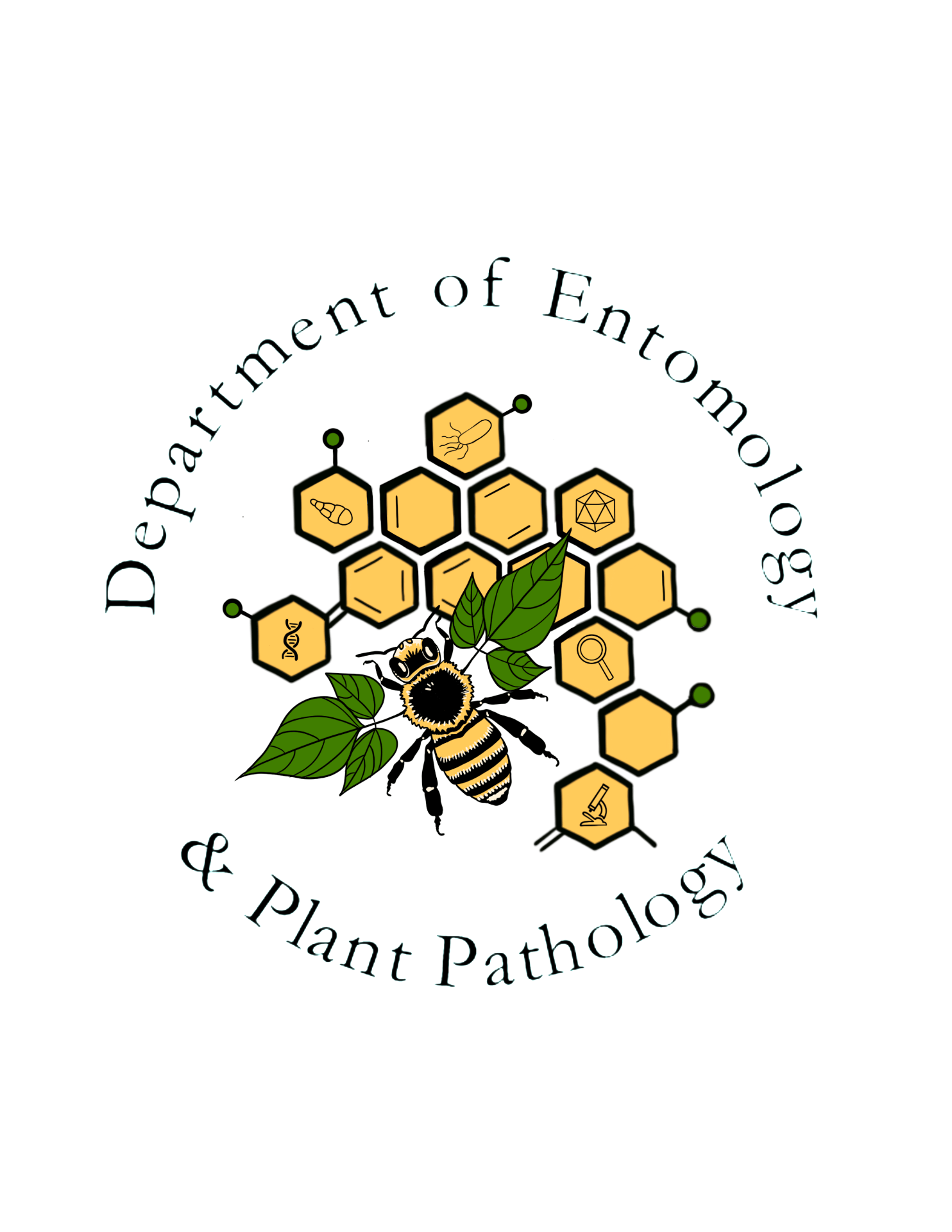Stinging rose caterpillar
Order: Lepidoptera
Family: Limacodidae
Genus and species: Parasa indetermina (Boisduval)

The black-tipped spines on the elongate body wall projections have poison glands at their bases. Venom enters the skin of humans or animals when the caterpillars are touched and the tips of the spines break off. The caterpillars are said to be capable of producing skin irritation similar to that produced by saddleback caterpillar, which is considered among the most severe urticating caterpillars in North America. Specialized irritating spines, called caltrop spines, are present on the lateral horns of several segments.
(Illustrations from Dyar, H. G. 1897. Life-histories of the New York slug caterpillars – VII-IX. Journal of the New York Entomological Society 5: 1-14.)
This species is widespread in the forests of the eastern United States, but it is not particularly common. In fact, in some areas, such as New York State, it is considered a species of conservation concern. The adult moths, which have a wing span of about an inch, fly in early summer. Females lay eggs in July, and the eggs hatch in about nine days. Larvae tend to hide on the undersides of leaves. They mature around mid September. The species winters as a pupa inside a cocoon
The weird caterpillars of the moth family Limacodidae are known as slug caterpillars. The head capsule is complete, but it is usually withdrawn and concealed in the prothorax. The thoracic legs are small, and the abdominal segments lack the fleshy prolegs found in most caterpillars. Instead, abdominal segments 1-7 and 10 have a single median sucker-like oval lobe that lacks spines or hooks.
Stinging rose caterpillars, also known as the rose slug caterpillars, are the bizarre larvae of handsome green and pale brown moths. Mature caterpillars are less than an inch long, and they caterpillars are known to feed on foliage of rose, dogwood, apple, cherry, bayberry, hickory, maple, poplar, and oak. They are said to be aposematically colored. The specimen shown here, collected in Washington County, Arkansas, has a fiery red ground color and brilliant yellow, spined tubercles projecting from the body wall that warn potential predators of poisonous qualities. Many caterpillars lack the red ground color and are yellow throughout.


References:
Chittenden, F. H. 1913. The roser slug-caterpillar. United States Department of Agriculture, Bureau of Entomology Bulletin 124: 9 pages.
Dyar, H. G. 1897. Life-histories of the New York slug caterpillars – VII – IX. Journal of the New York Entomological Society 5 (1): 1-14.
Epstein, M. E. 1997. Parasa indetermina (Boisduval) (Lopidoptera: Limacodidae), a new host of Systropus macer Loew (Diptera: Bombyliidae). Proceedings of the Entomological Society of Washington 99 (3): 585-586.
Gilmer, P. M. 1925. A comparative study of the poison apparatus of certain lepidopterous larvae. Annals of the Entomological Society of Washington 43: 2-3-239.
Heppner, J. B. 1995. Urticating caterpillars in Florida: 2. Slug caterpillars (Lepidoptera: Limacodidae). Florida Department of Agriculture and Consumer Services, Division of Plant Industry, Entomology Circular 372: 4 pages.
